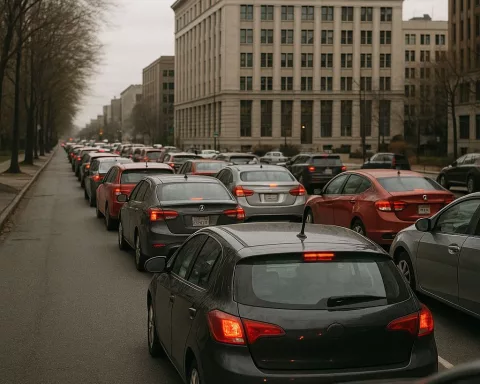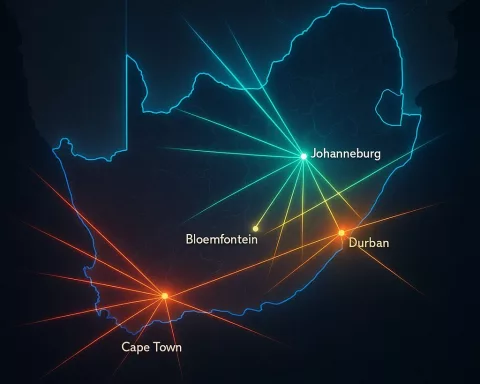Cape Town uses special cameras to catch drivers and passengers not wearing seatbelts, aiming to make roads safer by giving fines automatically. But sometimes, people get fined without clear proof, making them feel the system isn’t fair or open. This has caused worry about trust and fairness, since drivers want to see real evidence and have a chance to explain themselves. To keep people safe and happy, the city needs to be clearer and let people check and challenge fines easily. This way, technology helps protect lives while respecting everyone’s rights.
What is seatbelt surveillance in Cape Town and how does it impact drivers?
Seatbelt surveillance in Cape Town uses automated cameras to enforce seatbelt laws, issuing fines for violations. While improving road safety, the system raises concerns about transparency, evidence access, and public trust, highlighting the need for clear procedures and fair appeals to ensure accountability.
An Ordinary Drive, An Unusual Fine
On a typical Cape Town morning, the city’s highways hum with activity as commuters travel to work and families shuttle children to school. Amid this daily bustle, drivers pass under a quiet network of traffic surveillance cameras, devices designed to enforce traffic safety laws. For most, these cameras are simply a part of the urban landscape—rarely noticed, often ignored. But for Amaan Sayed, one such camera turned an unremarkable commute into a lesson about the complexities of automated law enforcement.
Sayed first encountered Cape Town’s seatbelt surveillance system in an unexpected way. In January, he drove along Nelson Mandela Boulevard, a prominent thoroughfare known for its sweeping city views and steady traffic. Some weeks later, as he checked the City of Cape Town’s online portal to pay an unrelated speeding ticket, another penalty drew his eye: a R500 fine citing a failure to wear a seatbelt. This citation included a photo of his license plate but provided no image of the car’s interior—no clear proof that he or any passenger had indeed neglected to buckle up.
Curious, Sayed contacted the city’s traffic call centre for clarification. The official he reached confirmed that an image of the car’s occupants existed, yet it neither accompanied the fine nor offered undeniable evidence of a seatbelt violation. After Sayed challenged the accuracy and transparency of this process, the city ultimately withdrew the fine. Still, the episode left him—and others in his position—questioning how Cape Town’s automated system makes and supports its judgments.
The Promise and Challenge of Automated Enforcement
Automated traffic cameras have become a fixture in cities worldwide, promoted as tools to increase road safety and ensure consistent enforcement. In Cape Town, these cameras form part of a broader strategy to reduce injuries and fatalities by catching and penalizing seatbelt violations. The city’s traffic services, represented by spokesperson Maxine Bezuidenhout, maintain that the entire process follows national legal standards and uses an external service provider for processing fines. The penalties are steep: R500 for each adult without a seatbelt, and a doubled fine if a child is found unrestrained.
At a public health level, the rationale behind such enforcement is clear. Decades of research and international campaigns emphasize that seatbelts save lives, dramatically reducing the severity of injuries in accidents. South Africa, like many nations, has committed to improving road safety, and the use of surveillance technology reflects both global best practices and local policy.
However, the process raises important questions when the system’s judgment cannot be easily scrutinized by those it penalizes. In Sayed’s situation, the absence of clear photographic evidence undermined the legitimacy of the fine. This gap between technological capability and fair process highlights a tension inherent to automated enforcement: efficiency and consistency often come at the expense of transparency and context. When an individual cannot access the evidence used against them, the principles of due process—such as the presumption of innocence and the right to a fair challenge—can feel compromised.
Trust, Transparency, and the Lessons of History
Effective law enforcement requires more than just the letter of the law; it depends on public trust. South Africa’s complex history with surveillance during periods of state overreach has left a legacy of wariness around government monitoring. Today, while traffic cameras serve a public safety goal rather than political control, the underlying concerns about privacy and accountability remain relevant.
Scholars and civil liberties advocates warn that systems which operate without transparency risk undermining the social contract between authorities and citizens. Surveillance, even when well-intentioned, must be accompanied by mechanisms for review and appeal. In other parts of the world, drivers have successfully contested automated fines for various infractions, arguing that camera-based systems sometimes fail to provide full context or account for errors.
In Cape Town, Sayed’s case is not unique. Residents have voiced similar frustrations, particularly when they feel unable to verify or contest the allegations made against them. This lack of accessible evidence not only affects individuals but can erode broader confidence in the fairness of city authorities. As more aspects of daily life become subject to automated oversight, the need for robust safeguards and transparent procedures becomes all the more urgent.
Rethinking the Role of Technology in Civic Life
The debate over Cape Town’s seatbelt cameras points to larger questions about how technology intersects with justice and daily experience. Surveillance cameras, after all, do not simply record violations—they also shape human behavior. Many drivers may buckle up only when approaching familiar camera sites, or may mistrust the system entirely, feeling monitored rather than protected.
International models offer some guidance for addressing these concerns. Cities like Stockholm and London, which have pioneered automated traffic enforcement, have introduced public portals where drivers can review the evidence behind their fines. Some have even implemented real-time notifications and streamlined appeals processes. These innovations recognize that the legitimacy of enforcement comes not from technology alone, but from the public’s ability to understand, challenge, and trust the system.
Ultimately, technology should serve as a tool for both safety and justice. When authorities combine smart enforcement with transparency and accountability, they foster voluntary compliance and reinforce the legitimacy of the law. Conversely, when people feel that machines—not humans—are making opaque and unchallengeable decisions, civic trust is put at risk.
Everyday Ethics and the Road Ahead
As Cape Town continues its effort to improve road safety through technological innovation, the experience of drivers like Amaan Sayed serves as a reminder of the ethical stakes involved. Automated systems, for all their promise, cannot always distinguish between the careless and the unlucky, the habitual offender and the one-time oversight. They offer only a partial snapshot of reality—a fragment of a much larger story.
To move forward, city officials must ensure not only that their systems are effective, but that they remain open to scrutiny and responsive to public concerns. This means investing in clearer evidence protocols, expanding access to information, and offering meaningful avenues for appeal. In doing so, Cape Town can build a traffic enforcement system that protects lives without sacrificing the values of fairness and trust that underpin a healthy society.
In the end, every journey through the city is shaped by both rules and relationships. The cameras above Cape Town’s roads reflect our collective aspiration for safety, but also our ongoing negotiation between technology and humanity. By balancing enforcement with empathy, and efficiency with transparency, the city can ensure that its roads—and its institutions—remain worthy of the trust its residents place in them.
FAQ: Seatbelt Surveillance in Cape Town
What is seatbelt surveillance in Cape Town and how does it work?
Cape Town employs automated cameras on roads and highways to detect drivers and passengers who are not wearing seatbelts. When a violation is detected, the system issues fines automatically, aiming to improve road safety by enforcing seatbelt laws consistently. Cameras capture images of vehicles, and fines are processed through an external service provider in line with national legal standards.
Why do some people receive seatbelt fines without clear photographic evidence?
While the system captures images of vehicles and their occupants, sometimes only the license plate image is included with the fine notification, without clear photos showing the seatbelt violation inside the vehicle. This lack of visible evidence has caused confusion and distrust among motorists, who feel the system lacks transparency and does not provide sufficient proof to support the fines.
How can drivers challenge or appeal seatbelt fines issued by automated cameras?
Currently, drivers can contact the City of Cape Town’s traffic call centre to seek clarification or dispute fines. However, the process has been criticized for limited access to full photographic evidence and difficulty in challenging penalties. To build public trust, the city is encouraged to improve transparency by providing easy access to evidence and establishing clear, user-friendly appeal mechanisms.
What are the benefits of using automated seatbelt enforcement cameras?
Automated enforcement helps reduce injuries and fatalities by encouraging consistent seatbelt use across all road users. Research shows that seatbelts save lives and reduce injury severity in accidents. By issuing fines automatically, the system aims to improve compliance without relying solely on manual police enforcement, thus enhancing overall road safety.
What concerns exist regarding surveillance and privacy in Cape Town’s seatbelt enforcement?
Given South Africa’s history with state surveillance, there is public wariness about government monitoring. People worry about privacy, fairness, and the potential for errors or misuse. Without transparency and the ability to review evidence, automated surveillance risks undermining trust between citizens and authorities, making it essential for the city to balance safety goals with respect for individual rights.
How do other cities handle automated traffic enforcement to ensure fairness and trust?
Cities like Stockholm and London have developed public portals where drivers can view all evidence related to their fines, including photos and videos. They also offer streamlined, accessible appeals processes and sometimes real-time notifications. These measures help drivers understand and trust automated enforcement, reinforcing compliance while protecting fairness and accountability.
If you have concerns about a seatbelt fine or want to learn more about your rights and the appeals process, it is advisable to contact the City of Cape Town traffic department or visit their official website for the most current information.









